
Daphne, a figure in Greek mythology, is a naiad, a variety of female nymph associated with fountains, wells, springs, streams, brooks and other bodies of freshwater.
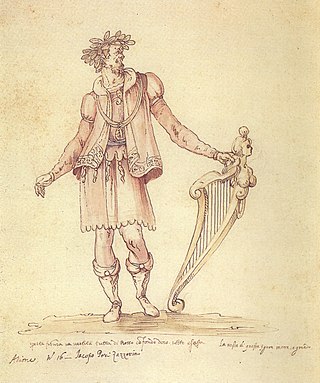
Jacopo Peri was an Italian composer, singer and instrumentalist of the late Renaissance and early Baroque periods. He wrote what is considered the first opera, the mostly lost Dafne, and also the earliest extant opera, Euridice (1600).
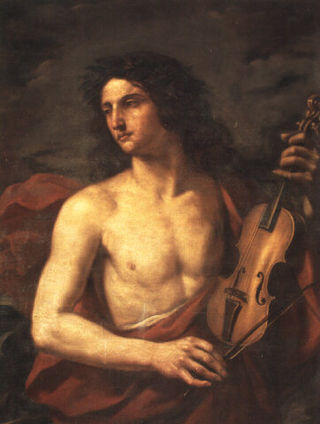
L'Orfeo, or La favola d'Orfeo, is a late Renaissance/early Baroque favola in musica, or opera, by Claudio Monteverdi, with a libretto by Alessandro Striggio. It is based on the Greek legend of Orpheus, and tells the story of his descent to Hades and his fruitless attempt to bring his dead bride Eurydice back to the living world. It was written in 1607 for a court performance during the annual Carnival at Mantua. While Jacopo Peri's Dafne is generally recognised as the first work in the opera genre, and the earliest surviving opera is Peri's Euridice, L'Orfeo is the earliest that is still regularly performed.

Dafne is the earliest known work that, by modern standards, could be considered an opera. The libretto by Ottavio Rinuccini, based on an earlier intermedio created in 1589, "Combattimento di Apollo col serpente Pitone," and set to music by Luca Marenzio, survives complete. The opera is considered to be the first "modern music drama."
The Florentine Camerata, also known as the Camerata de' Bardi, were a group of humanists, musicians, poets and intellectuals in late Renaissance Florence who gathered under the patronage of Count Giovanni de' Bardi to discuss and guide trends in the arts, especially music and drama. They met at the house of Giovanni de' Bardi, and their gatherings had the reputation of having all the most famous men of Florence as frequent guests. After first meeting in 1573, the activity of the Camerata reached its height between 1577 and 1582. While propounding a revival of the Greek dramatic style, the Camerata's musical experiments led to the development of the stile recitativo. In this way it facilitated the composition of dramatic music and the development of opera.
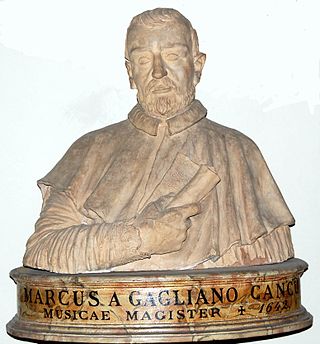
Marco da Gagliano was an Italian composer of the early Baroque era. He was important in the early history of opera and the development of the solo and concerted madrigal.
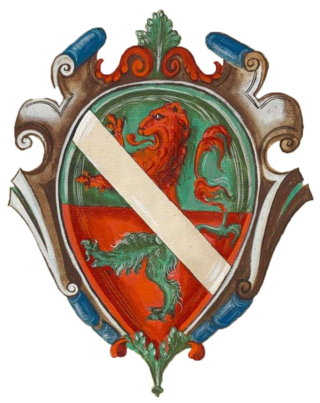
Jacopo Corsi was an Italian composer of the late Renaissance and early Baroque and one of Florence's leading patrons of the arts, after only the Medicis. His best-known work is Dafne (1597/98), whose score he wrote in collaboration with Jacopo Peri. Six fragments of the score have survived, two by Corsi and four by Peri. The libretto, by Ottavio Rinuccini, has survived intact. Despite priority quibbles at the time, Dafne is generally accepted as the first opera.

Ottavio Rinuccini was an Italian poet, courtier, and opera librettist at the end of the Renaissance and beginning of the Baroque eras. In collaborating with Jacopo Peri to produce the first opera, Dafne, in 1597, he became the first opera librettist.
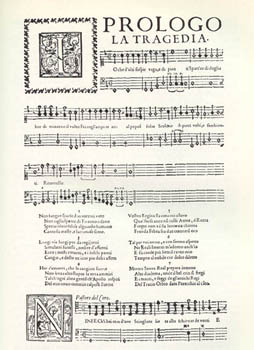
Euridice is an opera by Jacopo Peri, with additional music by Giulio Caccini. It is the earliest surviving opera, Peri's earlier Dafne being lost. The libretto by Ottavio Rinuccini is based on books X and XI of Ovid's Metamorphoses which recount the story of the legendary musician Orpheus and his wife Euridice.

Ascanio in Alba, K. 111, is a pastoral opera in two parts by Wolfgang Amadeus Mozart to an Italian libretto by Giuseppe Parini. It was commissioned by the Empress Maria Theresa for the wedding of her son, Archduke Ferdinand Karl, to Maria Beatrice d'Este on 15 October 1771.
Rappresentatione di anima et di corpo is a musical work by Emilio de' Cavalieri to a libretto by Agostino Manni (1548–1618). With it, Cavalieri regarded himself as the composer of the first opera or oratorio. Whether he was actually the first is subject to some academic debate, as is whether the work is better categorized as an opera or an oratorio. It was first performed in Rome in February 1600 in the Oratorio dei Filippini adjacent to the church of Santa Maria in Vallicella.

The art form known as opera originated in Italy in the sixteenth and seventeenth centuries, though it drew upon older traditions of medieval and Renaissance courtly entertainment. The word opera, meaning "work" in Italian, was first used in the modern musical and theatrical sense in 1639 and soon spread to the other European languages. The earliest operas were modest productions compared to other Renaissance forms of sung drama, but they soon became more lavish and took on the spectacular stagings of the earlier genre known as intermedio.
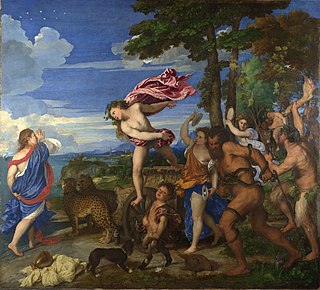
L'Arianna is the lost second opera by Italian composer Claudio Monteverdi. One of the earliest operas in general, it was composed in 1607–1608 and first performed on 28 May 1608, as part of the musical festivities for a royal wedding at the court of Duke Vincenzo Gonzaga in Mantua. All the music is lost apart from the extended recitative known as "Lamento d'Arianna". The libretto, which survives complete, was written in eight scenes by Ottavio Rinuccini, who used Ovid's Heroides and other classical sources to relate the story of Ariadne's abandonment by Theseus on the island of Naxos and her subsequent elevation as bride to the god Bacchus.
Barbara Russano Hanning is an American musicologist who specializes in 16th- and 17th-century Italian music. She has also written works on the music of 18th-century France and on musical iconography.

La Flora, o vero Il natal de' fiori is an opera in a prologue and five acts composed by Marco da Gagliano and Jacopo Peri to a libretto by Andrea Salvadori. It was first performed on 14 October 1628 at the Teatro Mediceo in Florence to celebrate the marriage of Margherita de' Medici and Odoardo Farnese, Duke of Parma. Based on the story of Chloris and Zephyrus in Book V of Ovid's Fasti, Salvadori's libretto contains many allegorical references to the transfer of political power, the beauty of Tuscany, and the strength of the Medici dynasty. The score of La Flora is one of only two still in existence out of Gagliano's 14 published stage works. Several of its arias are still performed as concert pieces.
Andrea Salvadori was an Italian poet and librettist. He was born in Florence and educated at the Collegio Romano in Rome. From 1616 until his death in Florence at the age of 43, he was the principal court poet to the Medici family. In addition to numerous theatrical entertainments and poems, he wrote the libretti for five operas, four of which have survived, although only La Flora composed by Marco da Gagliano and Jacopo Peri has an extant score. He was married twice, first to Emilia Rigogli by whom he had three sons and then to the painter Alessandra Furini. A collection of Salvadori's principal works curated by his son Francesco was published in 1668.

Die Dafne (1627) is an opera. Its libretto was written by Martin Opitz and its music was composed by Heinrich Schütz. It has traditionally been regarded as the first German opera, though it has also been proposed more recently that it was in fact a spoken drama with inserted song and ballet numbers.
Dafne in lauro is a chamber opera, a componimento per camera, composed by Johann Joseph Fux to a libretto by Pietro Pariati and performed for the imperial court before dinner on 1 October 1714 in the Favorita garden, Vienna, for the birthday of Emperor Charles VI. The opera is based on the myth of Apollo and Daphne, where Daphne pleads to Diana to be saved from Apollo's pursuit of her and is turned into a laurel tree.














